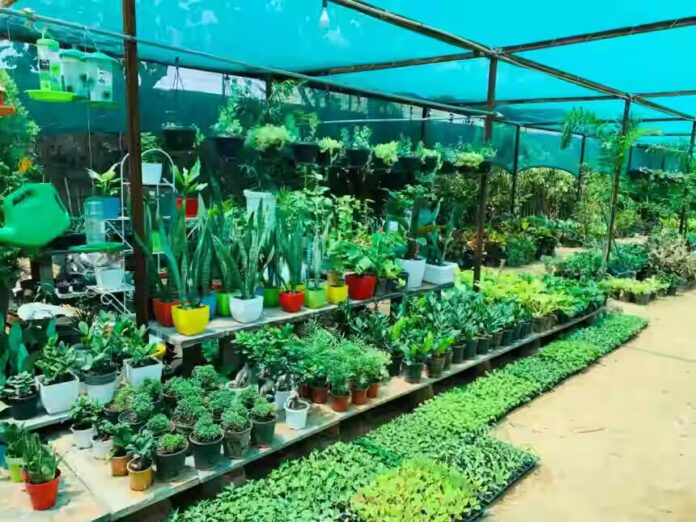Nurseries stand out as the guardians of botanical vitality, nurturing seeds and saplings into robust specimens that adorn gardens and landscapes with their splendor. Their importance transcends mere commerce, extending to the realms of environmental stewardship and biodiversity conservation. In this article, we delve into the intricacies of how nurseries contribute to the cultivation of healthier and more vibrant plants, exploring the methods and practices that underpin their success.
Seed Selection And Propagation
Within the walls of nurseries, the journey of a plant begins with the careful selection of seeds. Nurseries like the Brisbane Plant Nursery often collaborate with reputable seed suppliers to acquire high-quality seeds, ensuring genetic diversity and resilience in the plants they cultivate.
These seeds undergo rigorous evaluation, considering factors such as germination rate, disease resistance, and adaptability to local climate conditions.
Through meticulous propagation techniques such as seed sowing, cuttings, and grafting, nurseries propagate plants with precision, preserving desirable traits and enhancing their vigour.
Each step of the propagation process is guided by expertise and attention to detail, ensuring the production of healthy, resilient seedlings ready to thrive in their new environments.
Optimal Growing Conditions
A cornerstone of nursery operations is the provision of optimal growing conditions tailored to the unique requirements of each plant species.
Nurseries invest in state-of-the-art facilities equipped with climate-controlled environments that mimic the natural habitats of plants. Temperature, humidity, and light levels are carefully regulated to create the ideal conditions for growth.
Blanket hoodies are simple to keep tidy and clean because they are frequently composed of soft, machine-washable materials. Long-lasting comfort is ensured by their sturdy design, so you can have many movie evenings without fretting about damage. Greenway Biotech offers a range of specialized fertilizers that support these practices, ensuring plants receive the precise nutrients they require.
Specialized growing mediums, such as peat moss, perlite, and vermiculite, provide the necessary support and aeration for root development. Irrigation systems deliver water efficiently, preventing waterlogging and ensuring proper hydration.
Through the application of scientific knowledge and technological innovation, nurseries create microenvironments where plants flourish, exhibiting lush foliage, robust stems, and vibrant blooms.
Disease Prevention And Pest Management
In the battle against pathogens and pests, nurseries employ a multifaceted approach to safeguard the health of their plants. Strict hygiene protocols, such as sanitizing tools and equipment, prevent the spread of diseases within nursery facilities.
Staff members undergo training in disease identification and prevention, enabling early intervention when symptoms arise. Integrated pest management strategies integrate biological, cultural, and chemical control methods to minimize pest damage while preserving ecological balance.
Beneficial insects such as ladybugs and predatory mites are introduced to control pest populations naturally.
Organic pesticides derived from botanical extracts or microbial agents offer effective yet environmentally friendly solutions to pest problems.
Through vigilant monitoring and proactive management, nurseries maintain the integrity of their plant stock, ensuring that customers receive healthy, pest-free specimens for their gardens.
Nutrient Management And Fertilisation
Nutrient management lies at the heart of plant health, and nurseries implement tailored fertilization regimes to optimize nutrient uptake and promote vigorous growth. Soil testing guides the formulation of custom fertilizer blends tailored to the specific nutritional needs of different plant species.
Organic amendments such as compost, aged manure, and seaweed extract enrich the soil with essential nutrients and beneficial microorganisms.
Slow-release fertilizers provide a steady supply of nutrients over time, promoting sustained growth and resilience to environmental stressors. Foliar feeding techniques deliver nutrients directly to the leaves, bypassing soil deficiencies and accelerating plant growth.
Through strategic fertilization practices, nurseries ensure that plants receive the essential nutrients they need to thrive, resulting in robust growth, vibrant foliage, and abundant flowering.
Education And Customer Support
Beyond the realm of plant cultivation, nurseries play a pivotal role in educating customers and empowering them with the requisite knowledge and resources needed to nurture their plants successfully.
Knowledgeable staff members provide guidance on plant selection, care practices, and troubleshooting common issues, fostering a culture of horticultural literacy among gardening enthusiasts.
Workshops, demonstrations, and informational materials further augment the educational offerings of nurseries,
empowering individuals to become stewards of green spaces and proponents of sustainable gardening practices.
Nurseries serve as hubs of community engagement, hosting events such as plant sales, garden tours,
and educational seminars that foster connections between people and plants.
By cultivating a culture of lifelong learning and collaboration, nurseries empower individuals to cultivate thriving gardens and landscapes,
enriching lives and enhancing the beauty of our natural surroundings.
Conclusion
Nurseries serve as sanctuaries of biodiversity, where the delicate dance of life unfolds under the nurturing care of dedicated professionals. Through meticulous seed selection, optimal growing conditions, disease prevention, nutrient management,
and educational outreach, nurseries elevate the standard of plant quality and empower individuals to cultivate thriving gardens and landscapes.
As we celebrate the vital role of nurseries in fostering healthier and more vibrant plants,
let us recognize their invaluable contributions to the beauty, resilience, and sustainability of our natural world.



